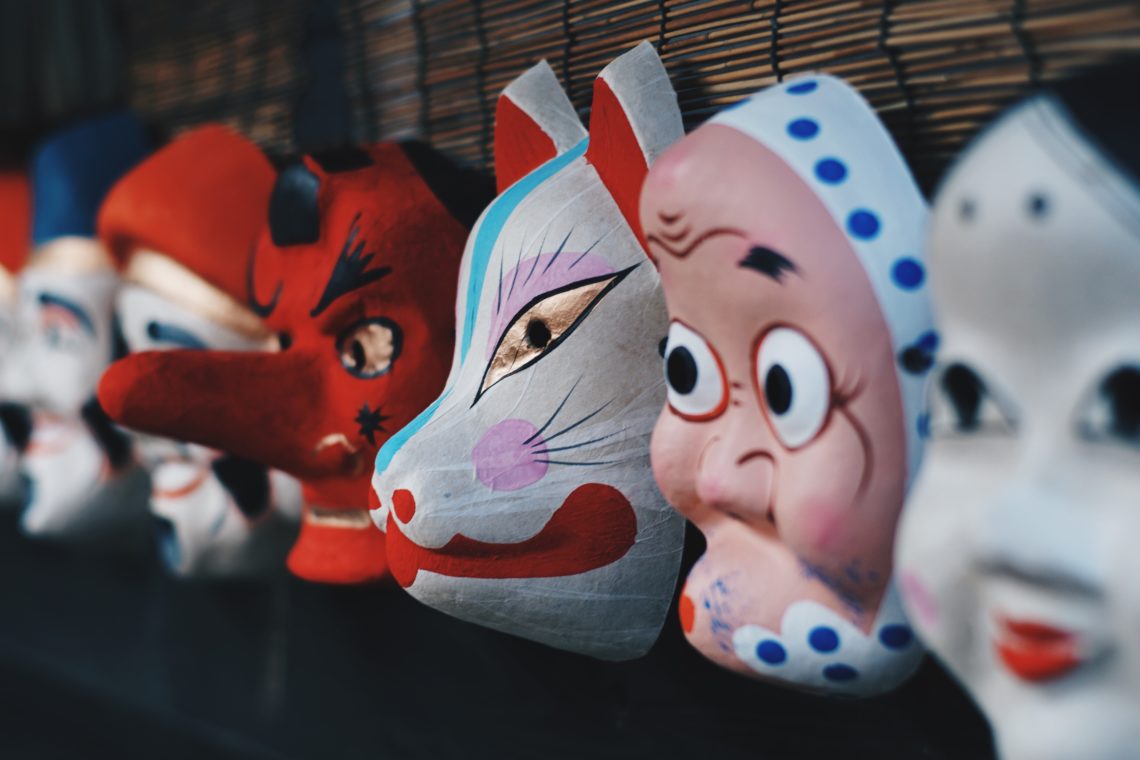This post focuses mostly on the recent study by Laura Niemi and Liane Young into victim blaming and our moral compass. Beyond just world bias Neimi and Young found that the degree to which we victim-blame has a lot do with whether we hold one of two different types of moral values. (That dichotomy we so love, again.)
In their experiments, in which they manipulated vignettes depicting acts of a criminal nature, Neimi and Young discovered that those who value the reduction of harm and believe in the importance of our societies to care for all people are more likely to blame perpetrators and to recognize the circumstances that may have forced a person into a bad situation. Whereas those who hold to values like fidelity, virtue, and/or respect for and duty towards authority are more apt to victim blame. This was true regardless of political orientation or demographics.
Values which focus on universal harm reduction are called individualizing values. At the extreme end people with individualizing values believe no one deserves harm. On the other side are binding values. Fidelity, virtue, respect for authority, these mores are imperative to keeping societies stable. At the extreme end they can lead to the dehumanization of outsiders and nonconformists. While conservatives have traditionally prioritized binding values and liberals individualizing values there is a spectrum and most of us have a blend of both.
Binding values earn their name because they are important to group cohesion. As such we all have them to one degree or another. Binding values are what make us uncomfortable around people and things that are outside of our traditions, our normal. Unfortunately, this can also cause us to not only victim-blame but to look at victims as stigmatized by their trauma. At the far end someone who strongly believes in binding values may be unable to see the harm caused to the victim at all.
This split between the righteousness of group allegiance over justice for all goes beyond how we identify ourselves in our respective clans. “We’re finding it across victimization in general,” Niemi is quoted as saying in an article in Live Science. “So,” she continues. “There’s something about just being in that victim role that’s what’s important. What this work was overlooking was that it matters whether you think it’s legitimate that people can deserve to be harmed at all.”
In another study by Paul Pollard, Judgments about Victims and Attackers in Depicted Rapes: A Review, published in the British Journal of Social Psychology subjects were told to rate the victim and perpetrator in their responsibility for the crime based on specific cases the subjects were given. They were also asked what behaviors by the perpetrator and/or victim could have altered the outcomes.
Those with individualizing values focused on the perpetrator not, you know, being a gods be damned perpetrator. Meanwhile people with binding values zeroed in on the victim. Those for whom binding values were strongest were prone to focus on things the victims, rather than the perpetrators, could have done in a different way. How their faulty choices led to the negative consequence and how better decisions on behalf of the victim would have avoided the negative outcome. According to Niemi, “Binding values were related to victim stigmatization, victim blame, victim responsibility and victim judgment.”
In the Laura Niemi and Liane Young experiment they “manipulated linguistic focus on agents versus patients in vignettes involving sexual assault.” Basically, they had folks read about sexual assaults. Unlike the Pollard experiment sometimes the perp was the subject, other times the victim was the subject. Niemi and Young found when the victim was the subject, the focus of attention, there was a higher tendency to victim-blame.
“If you focus less on victims and more on perpetrators, it actually led to more sympathy for victims,” Niemi said. Niemi and Young admit that the effect seemed to be minor but when you think about the sheer mass of media we are exposed to those small influences add up. Especially when we consider that though the experiments here focused on crime people who are predisposed to victim-blame do so regardless what misery: crime, illness, or even natural disaster, may have befallen the victim.
Using an example of a shooting that took place in my hometown Niemi said the headline “Alton Sterling was shot by police,” would incite more victim-blaming than. “Police shot Alton Sterling.” This leads to ideas on what the media can do to help alleviate victim-blaming and how it perpetuates it. Which, of course means a conversation on gender perceptions and norms, class, and because class and race are intimately conflated in the US, race and ethnicity.
The media has historically done an abysmal job of handling victimhood of almost anyone. Brock Turner, convicted of sexual assault, is still routinely referred to as the Stanford Swimmer. Chris Watts, a middle class white man, was portrayed as a father and family man even after he allegedly brutally killed them all in an act of premeditated, first degree murder. Accused of second degree murder for defending his daughter from a would be rapist Melvin Harris III, a Black man, is portrayed as just another suspect.
Imagine how a Black man accused of murdering his pregnant wife and two toddler daughters would be treated by the media vs a white man who killed while rescuing his daughter from an attacker? It’s doubtful the white man would face charges at all. Instead he would hailed as a hero and invited to talk shows. Meanwhile the Black man would be (rightly) depicted as a monster and there would howls for the death penalty. Almost three out of four sexual assault victims do no not file charges with the police in no small part because they don’t want to be violated all over again by “the process” just to watch their attacker go free or get a slap on the wrist.
As a matter of fact even white suspects are often treated better in the media than their victims. Especially if the victim is Black. Seventeen year old Trayvon Martin was damned as a thug for attempting to defend himself from a violent stalker while Dylan Roof was taken for a drive through meal moments after his murder spree. Heavily armed white mass murderers are routinely taken alive yet, according to Wikipedia, unarmed Black suspects are over one and a half times more likely to be shot than their white brethren.
All of the perpetrators in these cases were straight white men of privilege. The media, being run by straight white men of privilege, reacts with shocked outrage when one of their own is thought to have done something awful. It looks for reasons, excuses, as to how what should have been a stalwart bastion of wasphood came to be capable of such horror. It’s far easier to turn to the victim and ask: What was she wearing? Why was he at that party? Why did she wait so long to tell anyone? Why didn’t he call the police? Why didn’t they just bow down to misogynistic white supremacy?
What about when there is no perpetrator? People who are predisposed to victim-blame do so regardless what misery: crime, illness, or even natural disaster, may have befallen their targets. When natural disasters hit Black people are looting and white people taking the same items are foraging for supplies. The opioid epidemic has brought forth sympathy while the crack epidemic elicited howls for harsher prison terms. No-one cared about AIDS as long as it was seen as a disease of gay men. There are almost forty million Americans (including 22.3 million women and 12.8 million children) living at or below the poverty level. Seventeen million are white. They rarely appear in the media. Which brings us to the straight white male who is not privileged, is not middle class or working class but with a good story. Victim or perpetrator, he is usually ignored. Or made fun of.
So, what can the media do better? Focus on the perpetrator and his/her actions, the hurricane and its devastation, the disease and its symptoms. Stop over reporting crime and lay off the “if it bleeds, it leads” mentality. End the exploitation of victims in order to manipulate our most base emotions and instincts. This won’t happen because news isn’t about information, it’s about eyeballs and advertising dollars. Playing to our lizard brains and our baser, binding, instincts gets our attention and keeps those ad dollars rolling in.

Sources
https://source.wustl.edu/2018/02/police-kill-unarmed-blacks-often-especially-women-study-finds/
https://www.rainn.org/statistics/criminal-justice-system
https://nowthisnews.com/videos/news/how-two-fathers-charged-with-murder-are-covered-by-media
https://www.indy100.com/article/racism-america-us-media-black-white-chris-watts-murder-8503001
http://mammiddleagedmama.com/index.php/2019/02/0
